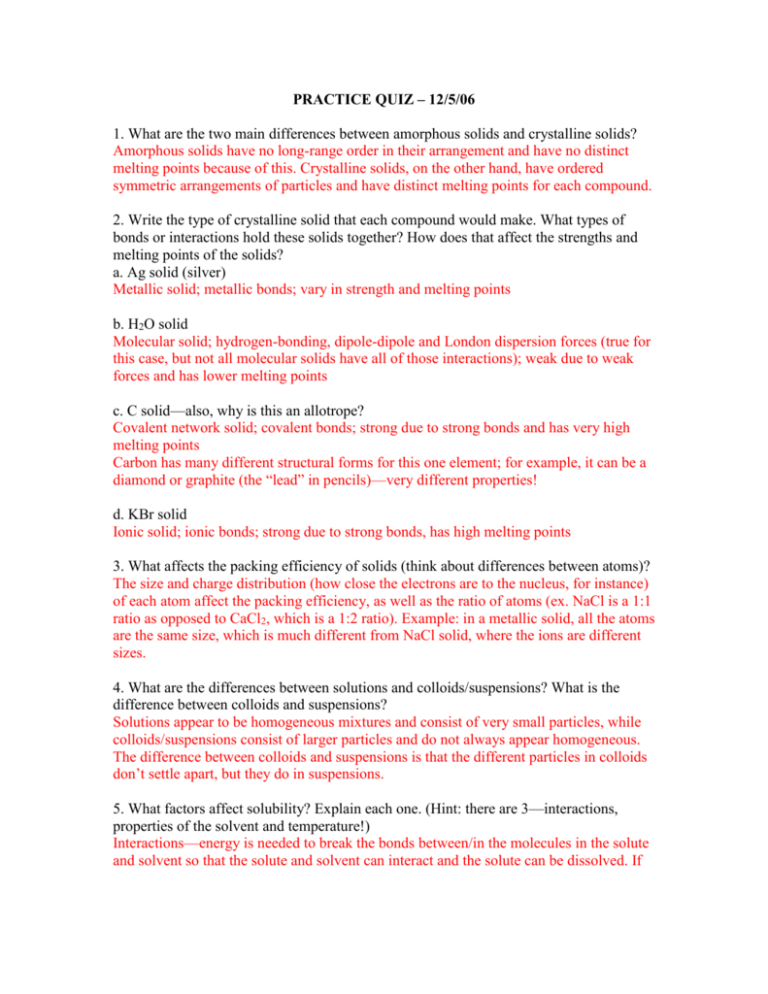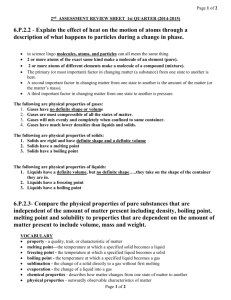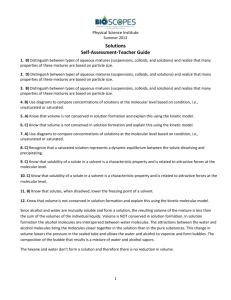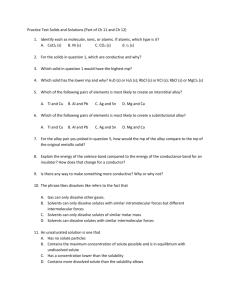PRACTICE QUIZ – 12/5/06
advertisement

PRACTICE QUIZ – 12/5/06 1. What are the two main differences between amorphous solids and crystalline solids? Amorphous solids have no long-range order in their arrangement and have no distinct melting points because of this. Crystalline solids, on the other hand, have ordered symmetric arrangements of particles and have distinct melting points for each compound. 2. Write the type of crystalline solid that each compound would make. What types of bonds or interactions hold these solids together? How does that affect the strengths and melting points of the solids? a. Ag solid (silver) Metallic solid; metallic bonds; vary in strength and melting points b. H2O solid Molecular solid; hydrogen-bonding, dipole-dipole and London dispersion forces (true for this case, but not all molecular solids have all of those interactions); weak due to weak forces and has lower melting points c. C solid—also, why is this an allotrope? Covalent network solid; covalent bonds; strong due to strong bonds and has very high melting points Carbon has many different structural forms for this one element; for example, it can be a diamond or graphite (the “lead” in pencils)—very different properties! d. KBr solid Ionic solid; ionic bonds; strong due to strong bonds, has high melting points 3. What affects the packing efficiency of solids (think about differences between atoms)? The size and charge distribution (how close the electrons are to the nucleus, for instance) of each atom affect the packing efficiency, as well as the ratio of atoms (ex. NaCl is a 1:1 ratio as opposed to CaCl2, which is a 1:2 ratio). Example: in a metallic solid, all the atoms are the same size, which is much different from NaCl solid, where the ions are different sizes. 4. What are the differences between solutions and colloids/suspensions? What is the difference between colloids and suspensions? Solutions appear to be homogeneous mixtures and consist of very small particles, while colloids/suspensions consist of larger particles and do not always appear homogeneous. The difference between colloids and suspensions is that the different particles in colloids don’t settle apart, but they do in suspensions. 5. What factors affect solubility? Explain each one. (Hint: there are 3—interactions, properties of the solvent and temperature!) Interactions—energy is needed to break the bonds between/in the molecules in the solute and solvent so that the solute and solvent can interact and the solute can be dissolved. If the energy obtained from solvation is greater than the energy lost from breaking bonds in the solute and solvent, then solubility takes place. Properties of the solvent—depending on the polarity/interactions within the solvent, they will only dissolve certain solutes. Example: oil dissolves non-polar molecules because it consists of non-polar molecules and its intermolecular forces consist of London dispersion forces only. Water has polar molecules and can dissolve polar molecules and some ionic solids. Temperature—at different temperatures, solubility can increase or decrease (solubility is a function of temperature).







